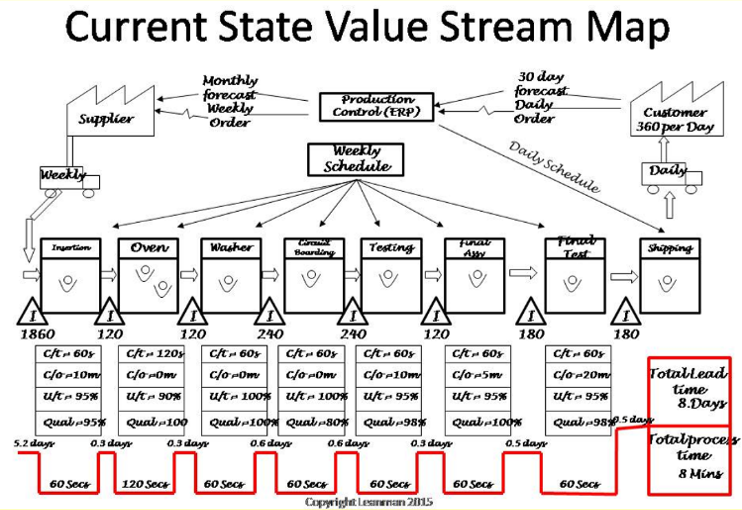Value Steam Mapping
Creating a Value Stream Map (VSM) can be a complex process, but it is essential for visualizing the true picture of your production cycle. VSM is a fundamental lean practice that involves diagramming a value stream, which includes all the actions (both value-creating and nonvalue-creating) needed to move a product or service from raw material to the customer. This process includes the material and information flow, and it helps identify and eliminate waste.
The Origins of Value Stream Mapping
Value Stream Mapping was developed by Toyota as a critical part of the Toyota Production System. Toyota refers to it as a material and information flow diagram. This tool has been instrumental in Toyota's success and has since been adopted by lean practitioners worldwide.
The Process of Value Stream Mapping
Creating the Current State Map: The process typically begins with a team creating a current state map. This map captures the actual condition of a value stream’s material and information flow. It provides a clear picture of how things currently operate, highlighting areas of inefficiency and waste.
Drawing the Future State Map: After the current state map is created, the team draws a future state map. This map represents a target image of how the material and information should flow through the value stream. The future state map aims to streamline processes, reduce waste, and improve efficiency.
Benefits of Value Stream Mapping
Repeatedly doing the value-stream mapping process is the simplest and best way to teach yourself and your colleagues how to see value-adding versus nonvalue-adding process elements. By visualizing the entire production process, teams can identify bottlenecks, reduce lead times, and improve overall productivity.
Applications of Value Stream Mapping
While VSM is most commonly used in lean manufacturing, it has been proven effective in any industry. Whether you are in healthcare, software development, or service industries, VSM can help you optimize your workflows and deliver better value to your customers.
